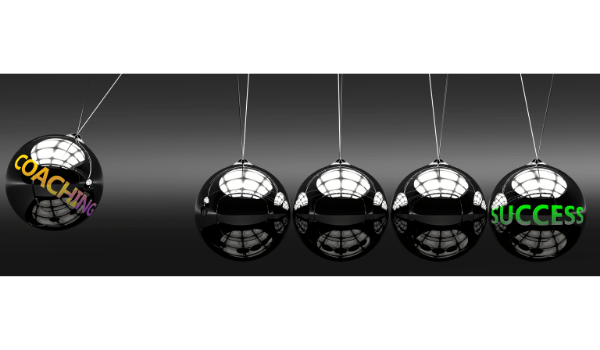I have lost count of the number of times in these past 365 days I have asked myself, ‘Where are the leaders? Why aren’t they coaching these employees?’
My journey to becoming a leadership coach is probably not unusual. After four decades as a professional in the not-for-profit healthcare sector, I had been ready for my career encore. During the last 25 of those years as a C-Suite, I have mentored, coached, trained, and supported countless employees. I have coached leaders from across the organisation. It was my job and my joy!
While working, I pursued certification in coaching at one of the top programmes in my country. My previous employer engaged with me to establish a coaching programme based on my training and my reputation as a mentor and coach. I achieved my credential (ACC) from the International Coaching Federation and felt supremely prepared for this new role.
Despite my many years as a leader, it is the new skills and training that I learned during my training and certification that I credit with my ability to be an effective coach. Right away, I recognised a glaring gap in the leadership competencies of most of our leaders – no one was coaching. Or if they were “coaching”, it went like this: “I coached her on that behaviour”, which is code for “I told her not to do that anymore”.
Most organisations need to step up their game when it comes to coaching. It will make the difference between a high-performing organisation that can meet its goals and one that will limp along caught in the downward spiral of mediocrity, disengagement and complacency. How does one know if one’s organisation needs to create a coaching culture? Here are the signs:
Sign #1: Employees are leaving
In my first year, I was assigned 12 clients from my organisation and had a few clients from other organisations. Most of them were considering leaving their current employer. The truth is that during the pandemic, most of us were re-evaluating our situations. Each of my individual development plans written for clients was drafted with the caveat “note – coaching conducted in a pandemic environment”, because all bets were off. These were not normal times.
Employees, newly-minted managers and leaders were second-guessing; they were scared and feeling unsupported. After all, according to the US Department of Labour, during April 2021, four million people left their jobs. The media dubbed this as THE GREAT RESIGNATION.
If the organisation’s first-year turnover rate is on the rise, if crucial leaders are resigning, are their direct managers listening to them? Are steps being taken to identify the potential for them to leave well in advance of the resignation? Where is the coaching?
Sign #2: Nothing is changing
Even employees identified as high potentials have gap areas. Human resource (HR) leaders, direct supervisors, and peers can send these employees to the best training workshops but may not see improvement over time. Part of my process as a leadership coach is to insist that every client has a sponsor. The role of the sponsor, as detailed in a signed agreement, is to be an ally for their employees. The sponsors review the employees’ gap areas with them and co-create action plans to address those gaps. Direct supervisors should check in periodically on the employees’ progress towards reaching their goals.
In nearly 200 hours of coaching this year, I have reinforced with my clients the expectation that once I leave (my engagement is limited – 6 months, 12 sessions), they should get the same level of support from their supervisor. What does that mean? Their supervisor should listen, ask questions, partner with them to change behaviours, help them to show up differently, and reach their goals.
Sign #3: Newly-promoted employees aren’t delivering
Once one promotes the strong performers, one expects them to deliver. Without goals being reached, targets met, or results returned, one may scratch one’s head as each month goes by. “What happened?” The answer lies in the lack of coaching. If the direct supervisor is not coaching the newly-promoted employee, then one should give up the fantasy that the employees will magically deliver what one expects. Working in tandem with the direct supervisor, a coach can establish goals and identify barriers to achieving them.
Sign #4: When a leader leaves, no one is ready to step up
Every once in a while, one is caught by surprise. One’s star performer has resigned for several reasons: retirement, relocation, or a change in personal situation. On looking around, one finds noone ready to take the reins. Again, THE GREAT RESIGNATION is at play.
However, that doesn’t mean one has to be caught off-guard. A coach can identify who is waiting in the wings and what gaps need to be filled. This type of information will be uncovered through conversations between coach and client and should be happening between supervisor and employee. Ask the leader: if one wins the lottery tomorrow, who is ready to fill one’s shoes? If the answer is: noone – it’s time to jump into action. Get a plan to develop the next level. A coach can hone in on that and make sure it bubbles to the top of the list for attention.
Sign #5: Accountability for leadership growth and development is relegated to HR
Even the best HR departments with the most robust leadership training programmes can’t be all things to all leaders. I am not exactly sure why, but most people who manage, lead, and supervise employees do not understand that their role involves coaching. Or they resist providing coaching. Perhaps they don’t like to deal with complex issues or have tough conversations such as giving feedback.
As Marshall Goldsmith, the well-known executive leadership coach and author, says: “there are two things wrong with feedback: no one likes to hear it, and no one likes to give it”. Sorry to break the news, but managing employees means doing some things we may not like to do. It comes with the territory.
So, let’s agree that the HR department can help with workshops and seminars about how to be a better manager, but as leaders, let’s look in the mirror. It starts with us. EVERY leader is a coach. They should be trained in the skills necessary to develop and support their direct reports.
Trained and certified leadership coaches possess the skills to develop and support and display them in every coaching session; but this is not where coaching ends. A coach supplements rather than replaces what every direct supervisor should be doing.
When I transitioned from full-time employee to contracted coach, I asked my organisation, in the context of my engagement, what will you consider success? The answer: the creation of a culture of leadership coaching that results in the organisation meeting its goals. Tall order? Yes. Unreasonable expectation? Not at all. The only way we can create high-performing organisations is through leadership growth and development. Coaches deliver on that in every session.
All leaders must be coaches. All organisations need them; and most leaders need a coach at some point in their careers. Organisations should develop their leaders to be coaches and engage with certified coaches to help create a coaching culture throughout the organisation.
Professional coaching services can be found using ICF’s directory of credentialed coaches spread in India and all over the world
The International Coaching Federation (ICF) is the world’s largest organisation leading the global advancement of the coaching profession and fostering coaching’s role as an integral part of a thriving society. Founded in 1995, its 50,000-plus members located in more than 145 countries and territories work toward the common goals of enhancing awareness of coaching and upholding the integrity of the profession through lifelong learning and upholding the highest ethical standards. Through the work of its six unique family organisations, ICF empowers professional coaches, coaching clients, organisations, communities and the world through coaching.
In India, ICF is represented by six vibrant chapters, all led by volunteers — ICF Bengaluru, ICF Chennai, ICF Delhi NCR, ICF Hyderabad, ICF Mumbai and ICF Pune.
 A graduate of the Georgetown University Executive Certificate programme in leadership coaching, and an ACC credentialed coach by the ICF, Paula Widerlite puts her decades of experience to use by helping leaders improve their effectiveness and assisting high-performing organisations to grow and develop their leadership teams. Paula Widerlite is the former chief strategy officer at Luminis Health, a $1.1 billion organisation. Her 40-year background in healthcare and decades in the C-Suite combined with her training and experience make her a highly-qualified leadership coach. Widerlite has served on several community boards and has been recognised for her community service, among other contributions.
A graduate of the Georgetown University Executive Certificate programme in leadership coaching, and an ACC credentialed coach by the ICF, Paula Widerlite puts her decades of experience to use by helping leaders improve their effectiveness and assisting high-performing organisations to grow and develop their leadership teams. Paula Widerlite is the former chief strategy officer at Luminis Health, a $1.1 billion organisation. Her 40-year background in healthcare and decades in the C-Suite combined with her training and experience make her a highly-qualified leadership coach. Widerlite has served on several community boards and has been recognised for her community service, among other contributions.



